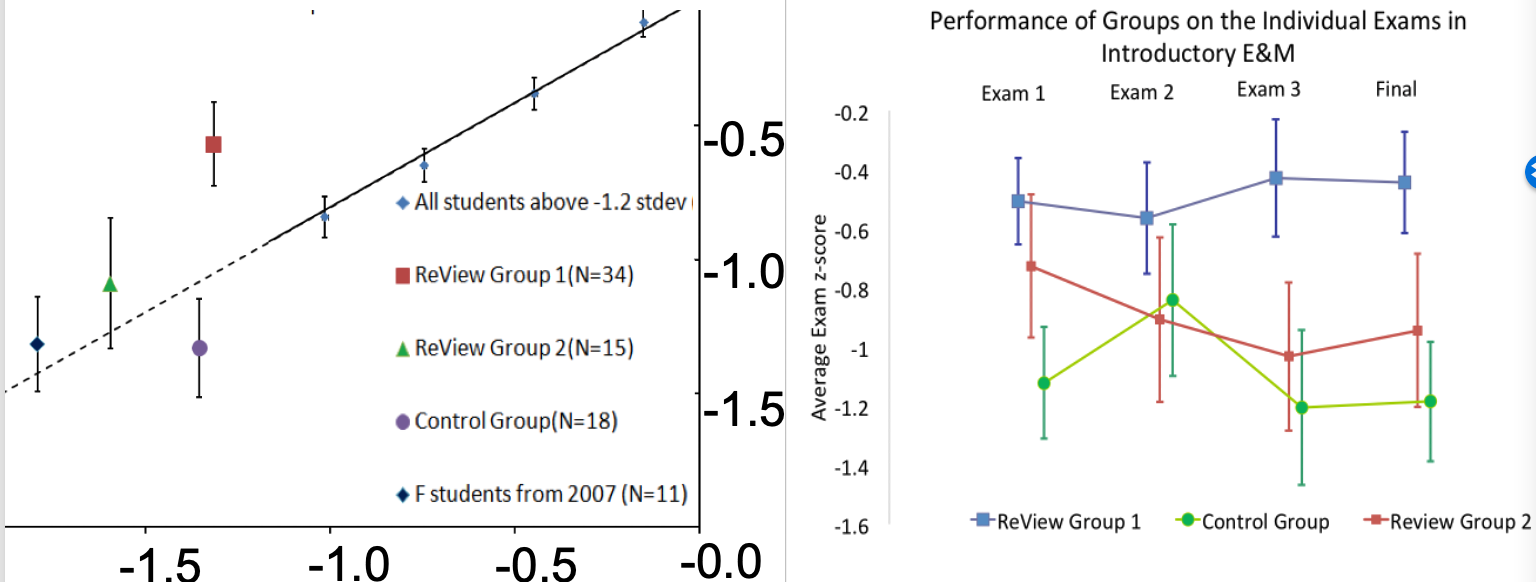A Modeling Pedagogy that Improves Problem Solving Expertise
Chi’s 1981 research revealed systematic differences between novices and experts that have since been found by others in many different subject domains. In particular, experts organize their knowledge according to fundamental principles (vs surface features), notice important details and ignore unimportant ones, chunk their knowledge into useful patterns, procedures and productions, and have rich interconnections within their knowledge. Novices’ have disjointed knowledge and generally rely on means-ends analysis and heuristic methods to find answers (often “find the formula and plug in”); they accept their answer as correct because they lack alternate ways to approach the problem or to check their answers. In contrast, experts analyze problems with an interconnected web of conceptual and procedural knowledge, plan their route to a solution, and check whether the answer makes sense once they get there (and sometimes en route to the solution).
Problem-solving expertise requires knowledge at several hierarchical levels illustrated below. The first is declarative – facts and concepts, and the second is procedural – a series of steps organized towards a particular objective. The third is strategic knowledge – the ability to examine an unfamiliar problem and decompose it into sub-problems to which previously known facts, concepts, and procedures can be applied. (Fourth is “generative expertise” which involves creativity and insight to do design or research such as for a thesis.) Instruction in most introductory university courses concentrates on the first two, whereas what separates experts from novices is primarily ability on the third and fourth levels.
Our Modeling Approach to Problem Solving (MAPS ) is a pedagogy aimed at imparting strategic knowledge, thus enabling students to learn expert problem solving in the context of introductory Newtonian Mechanics. All mechanics knowledge is organized into five similar core models to help chunk and interrelate their knowledge. Then unfamiliar problems are decomposed into parts to which the core models can by applied – a process called modeling that is based on identifying the forces, the system or subsystem, and the appropriate core model. It has demonstrated three major successes:
- improved the expertise of student’s learning attitudes as measured by the Colorado Learning Attitudes towards Science survey by about 10%,
- raises student scores on the MIT final exam by a standard deviation (3 week ReView course), and
- improves their scores in the subsequent Electricity and Magnetism course by ~ ½ a standard deviation vs students who didn’t take ReView.
The class using this pedagogy has highly interactive recitations with group problem solving, special activities, and an interactive online component with 1300 pages (html, videos, simulations, and questions).
PBP09 Modeling Applied to Problem Solving, Pawl, A., Barrantes, A. and Pritchard, D. E., AIP Conference Proceedings 1179 2009 Physics Education Research Conference, M. Sabella, Ch. Henderson, C. Singh, Eds. pp. 51-54, (2009).
RPB10 Improved Student Performance In Electricity And Magnetism Following Prior MAPS Instruction In Mechanics, Rayyan, S., Pawl, A., Barrantes, A. , Teodorescu, R. and Pritchard, D. E., Physics Education Research Conference 2010 AIP Conf. Proc. 1289, 273(2010).
FRT13 From Flipped to Open Instruction: The Mechanics Online Course Colin Fredericks, Saif Rayyan, Raluca Teodorescu, Trevor Balint, Daniel Seaton, and David E. Pritchard LINC symposium MIT 2013
The motivation and development of the Modeling Approach to Problem Solving and its accompanying online course. The improvements from one MOOC to the next, and showing that ~ 70% of students attempting the second homework assignment earned a certificate.
MAPS helps students organize their physics knowledge in a core models map, then to approach problem-solving as a modeling process based on the core models.
The left figure shows the improvement on a calibrated MIT final exam, measured in units of standard deviations from the mean (Z-score) that follow a 3-week intensive course using MAPS in IAP. The right figure shows the changes in the expertness of student attitudes toward learning science as measured by the Colorado Learning Attitudes about Science Survey. A more recent (2019 unpublished) study of the 8.01 mechanics course shows improvement although it still slightly decreases expertness in most categories (#6 is problem solving confidence, for example) while the IAP course improves expertness substantially.
Better Performance in Subsequent Physics Course
The left figure shows the excellent fit between Z-scores in Electricity and Magnetism (vertical axis) and those in Mechanics which extends to +2.0 (not shown). The IAP students (red on left figure, blue on right) show significant improvement above this indicating some carry-over from the ReView. Note that E&M grades of students who take a second semester of Mechanics (blue on left) do not rise above the best-fit line based on their first-time 8.01 grade. The right figure shows that the improvement persists through all the exams in E&M. The MAPS students in blue and red in right figure were at -1.3 and -1.6 respectively in their original 8.01 grade, the control group was at -1.3).
Student Comments
These comments are taken from end-of-course free responses to questions involving what was learned and/or whether the students feel prepared to move forward to E&M.
“I now know better how to organize the material in my head using the rubric…”
“I liked…looking at the basic solving steps that are normally assumed in 8.01 TEAL.”
“The S.I.M. rubric was extremely helpful. It should be taught in 8.01 the first time around.”
“I enjoyed systematizing my approach to problem solving…”
“The S.I.M. system…helps me plan my attack of the problem.”
“The systems, interactions, models…makes you think before jumping in.”
“I now feel I understand the concepts and I am no longer just plugging numbers into equations.”
“…the rubric on how to solve physics problems is very beneficial and keeps me on track while I am doing my work.”
“The material aside, the way we were taught to approach problems is extremely valuable.”



Comments